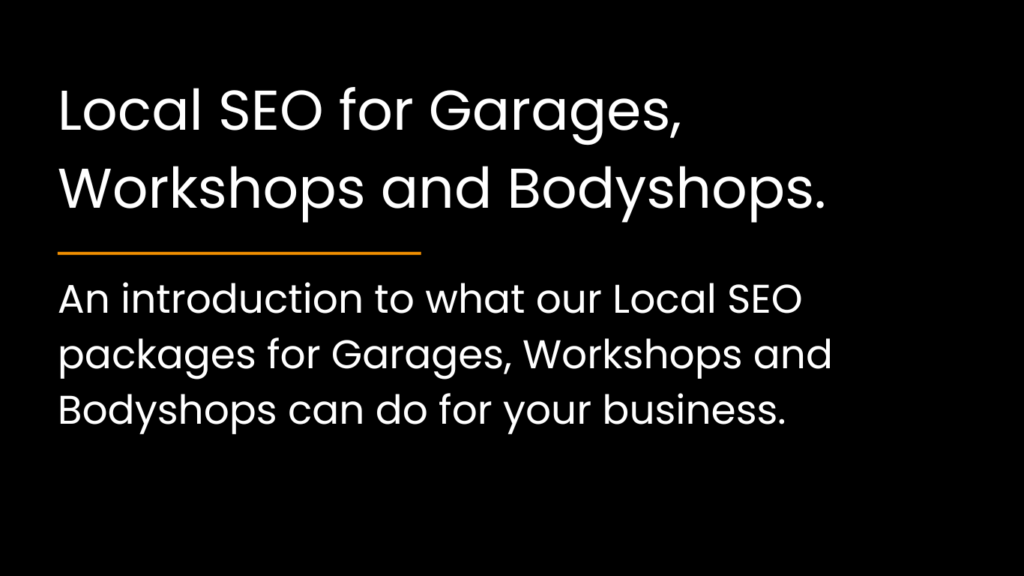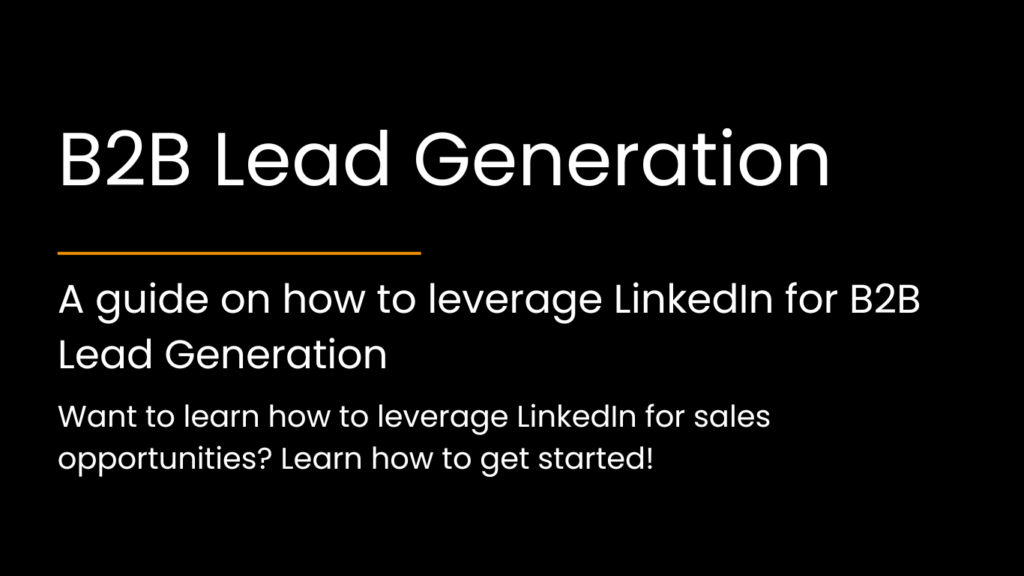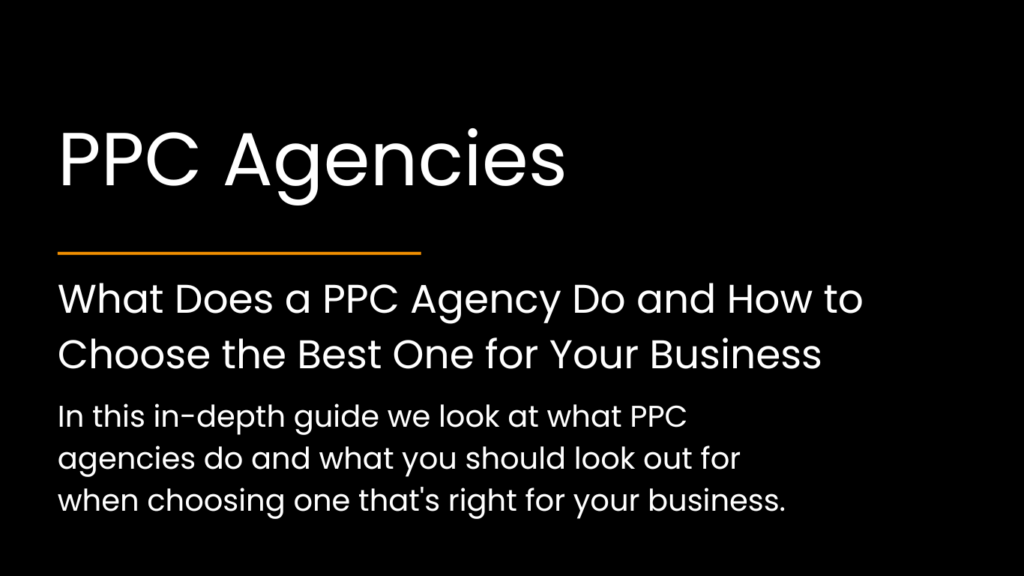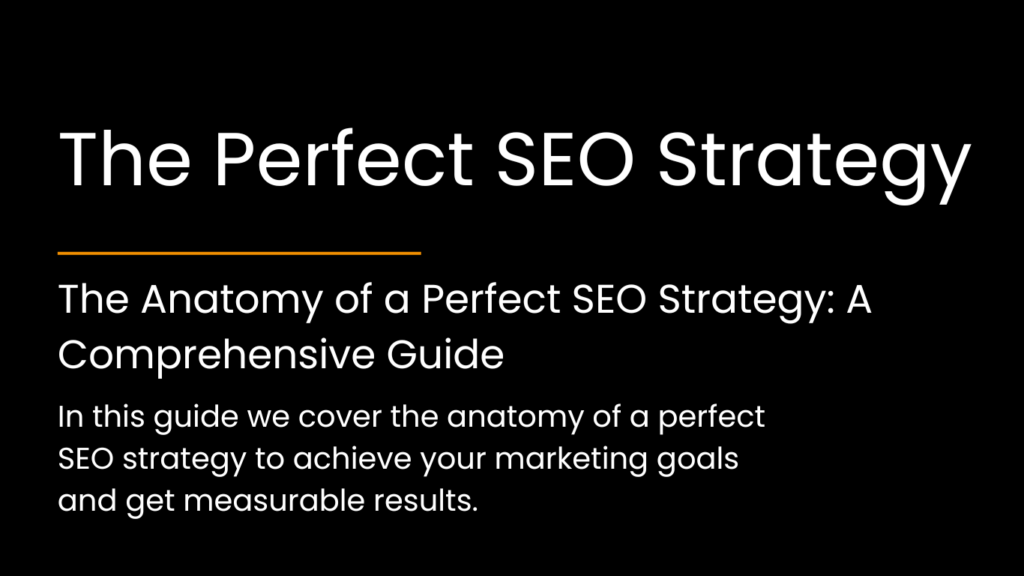The Importance of Linkedin
LinkedIn isn’t just a social network for job seekers anymore. It’s the largest professional network globally, and more importantly, it’s become a powerful B2B lead generation tool. If you’re not taking advantage of LinkedIn’s vast network of professionals and decision-makers to drive leads, you’re missing out on one of the most effective platforms for growing your business.
Unlike platforms like Facebook or Instagram, where casual interactions often dominate, LinkedIn is where business gets done. It is purpose-built for professional networking, making it an essential tool for businesses that sell to other businesses (B2B). For marketers, LinkedIn offers a platform that connects directly with decision-makers, allowing you to cut through the noise and make meaningful connections that can turn into sales.
In this guide, we’ll cover how to effectively use LinkedIn for B2B lead generation, from optimising your profile to engaging with prospects and using advanced tools like LinkedIn Sales Navigator and ads. We’ll show you how to turn LinkedIn into a lead-generating machine for your business.
Why LinkedIn is Essential for B2B Lead Generation
The LinkedIn user base is made up of over 900 million professionals, with many of these users holding decision-making positions within their companies. If your business serves other businesses, LinkedIn should be your primary focus for building high-value connections that can translate into sales.
Access to Decision-Makers
Unlike other social media platforms, LinkedIn is where professionals come to do business. Many of the users are senior executives, business owners, and purchasing decision-makers, which makes it ideal for B2B marketing. By engaging with the right people, you can bypass the gatekeepers and go straight to the source of purchasing power.
B2B Networking Environment
The platform is built around networking for business, not casual social interactions. This gives LinkedIn a more professional atmosphere, meaning users are more receptive to business-oriented content and outreach. It’s a space where decision-makers expect to be approached with relevant solutions to their business challenges, making it the perfect ground for B2B lead generation.
How to Optimise Your LinkedIn Profile for B2B Leads
Your LinkedIn profile is essentially your online CV and the first impression prospects will have of you and your business. An incomplete or poorly crafted profile can immediately ruin your chances of building trust with potential leads. Here’s how to ensure your profile is optimised for success:
Create a Professional Headline
Your headline is critical because it’s the first thing people see when they search for you. Make sure your headline is clear, compelling, and directly relevant to your audience. Use this space to explain what you do and, most importantly, how you can help other businesses. Incorporating relevant B2B keywords will also help increase your search visibility.
Example:
“Helping B2B companies generate more leads through SEO, digital marketing, and PPC strategies.”
Craft a Compelling Summary
Your summary should clearly explain what you do, without any fluff. Avoid the temptation to write a generic sales pitch. Instead, focus on your value proposition: what makes your service or offering different? Mention your expertise and include examples of the problems you solve for your target audience.
Use Professional Photos and Branding
Your profile photo and banner must reflect the professional nature of your business. A professional headshot is essential, and if possible, use a custom banner featuring your company’s logo and tagline to create a unified brand identity. Remember, branding consistency helps to build credibility, especially in the eyes of potential business clients.
LinkedIn Content Strategy for Lead Generation
A strong content strategy is the backbone of successful LinkedIn marketing. Regularly posting valuable content helps you stay at the forefront of your audience’s minds. It also reinforces your authority and expertise in your industry.
Post Valuable Content Regularly
While posting every day isn’t essential, consistently sharing high-quality, valuable content that addresses your target audience’s pain points is critical. Your content should serve a purpose: providing insights, answering common questions, or solving industry problems. Types of content to post include:
- Industry insights and trends.
- Case studies showcasing successful projects.
- How-to guides or tutorials related to your service.
- Company updates or behind-the-scenes content highlighting successes and challenges.
Utilise LinkedIn Articles and Video
LinkedIn Articles allow you to dive deep into topics that matter to your audience. These long-form pieces establish you as a thought leader in your field, giving you the opportunity to showcase your expertise.
Additionally, video content is an engagement powerhouse. Research shows that video posts generate more engagement on LinkedIn than any other content type. Consider creating short, digestible video content, such as product demos, client testimonials, or industry insights.
Use Hashtags and Keywords
To maximise the visibility of your posts, it’s important to use relevant hashtags and B2B keywords that your audience is likely searching for. LinkedIn allows up to three hashtags per post—choose wisely based on industry and topic. For example, if your business provides B2B digital marketing services, hashtags like #B2BMarketing and #LeadGeneration are solid choices.
LinkedIn Networking Tips to Connect with B2B Prospects
With your profile and content strategy in place, it’s time to start building your network. The following networking tips will help you connect with key decision-makers and build relationships that lead to business.
Join LinkedIn Groups
LinkedIn Groups are a goldmine for connecting with other industry professionals. Find groups relevant to your industry and start engaging with their members. By contributing valuable insights and participating in discussions, you can position yourself as a knowledgeable and helpful member of the community.
Personalised Connection Requests
Avoid the common mistake of sending generic connection requests. Take a moment to personalise your outreach by referencing something relevant to the person’s role, company, or mutual interests. This small effort increases the likelihood of acceptance and shows that you are genuinely interested in building a business relationship.
Example:
“Hi [Name], I noticed we both work within the B2B marketing space and share mutual connections. I’d love to connect and exchange insights on generating leads and improving marketing strategies. Looking forward to connecting!”
Engage with Comments and Posts
Actively engage with your prospects by commenting on their posts and sharing their content. This interaction increases your visibility and demonstrates that you’re interested in more than just promoting your own services. Over time, this helps build trust and credibility.
Using LinkedIn Sales Navigator for Targeted B2B Lead Generation
LinkedIn’s Sales Navigator is a premium tool designed for businesses that want to get serious about B2B lead generation. It provides advanced features that make targeting and outreach much more effective.
Advanced Search Filters
One of the most powerful features of Sales Navigator is its advanced search filters. These filters allow you to zero in on specific leads based on their job title, industry, company size, location, and more. For B2B marketers, this precision is invaluable. Instead of casting a wide net, you can focus on decision-makers who are highly relevant to your business.
Lead Recommendations
Sales Navigator provides lead recommendations based on your activity and interactions. This feature helps you find new leads that align with your previous searches or client profiles. By consistently engaging with these suggestions, you can continuously fill your pipeline with high-quality leads.
InMail Messaging
InMail is a premium LinkedIn feature that allows you to message people outside of your network. Use it sparingly, but when you do, make sure your messages are personalised and direct. Cold InMail messages should always provide value and not feel salesy. Focus on what you can do for the recipient’s business, rather than pushing your product or service.
LinkedIn Ads for B2B Lead Generation
While organic content is important, LinkedIn Ads can provide a massive boost to your lead-generation efforts by targeting a specific audience. The good news? LinkedIn offers several types of ads, all of which are designed to reach business professionals.
Types of LinkedIn Ads for B2B Marketing
- Sponsored Content: These are posts that appear directly in the LinkedIn feed. They look like regular updates but are boosted to a larger audience. Sponsored Content works well for increasing brand visibility or promoting specific offers.
- Sponsored InMail: This ad format delivers personalised messages straight to a user’s LinkedIn inbox. Sponsored InMail boasts higher open rates compared to traditional email marketing, making it an effective way to reach potential leads.
- Text Ads: These simple ads appear in the right-hand column of the LinkedIn interface. They’re cost-effective and ideal for increasing brand awareness.
Targeting Options in LinkedIn Ads
LinkedIn offers extensive targeting options to help you get your ads in front of the right people. You can narrow down your audience based on job title, industry, seniority, company size, and more. This level of targeting ensures your ads reach qualified leads, maximising your ad spend and driving better results.
Measuring LinkedIn Ad Performance
It’s crucial to keep an eye on the performance of your ads. Use LinkedIn’s built-in analytics to monitor key metrics such as:
- Click-through rate (CTR)
- Cost per click (CPC)
- Conversion rate
Regularly reviewing these metrics allows you to make informed decisions and optimise your campaigns for better performance.
Best Practices for Engaging B2B Leads on LinkedIn
Generating leads is only the beginning. Once you’ve connected with potential clients, you need to engage and nurture these relationships to turn them into actual business.
Personalise Your Outreach
Whether you’re sending a connection request or an InMail message, personalisation is key. Reference something specific to the recipient’s company, achievements, or needs. A personalised approach shows that you’ve done your homework and increases the chances of a positive response.
Nurture Leads Through Consistent Follow-Ups
Lead nurturing is essential in the B2B sales process. Consistently follow up with your leads, either by commenting on their posts or sending them valuable content. However, it’s important to strike a balance. Be persistent, but don’t come across as pushy.
Maximising LinkedIn for B2B Success
With the right profile, content strategy, and tools like Sales Navigator and LinkedIn Ads, you can turn the platform into a consistent source of high-quality leads for your business. Focus on building meaningful connections, engaging with your prospects, and consistently providing value, and you’ll see the benefits over time.
Now is the perfect time to maximise LinkedIn for your B2B marketing efforts. Follow the strategies outlined above and watch your lead generation soar.
Need help with marketing? Take a look here at how we can make a difference.








